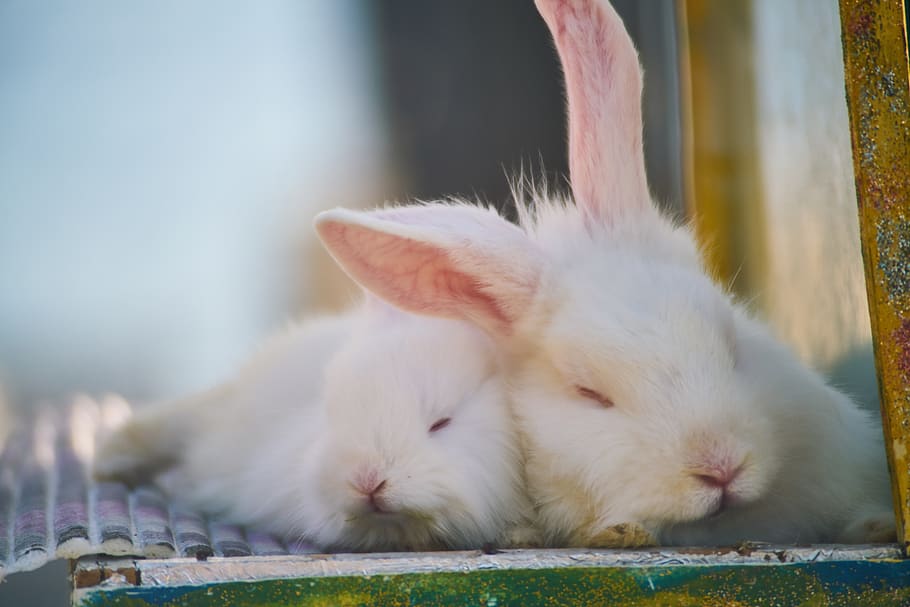Do you want to create a comfortable, protected, and at the same time stylish space for your favorite rabbit? How to Create a Stylish and Functional Bunny Room is not just about providing a cage; it’s about crafting a safe and joyful world of your rabbit’s own, where they can move around, play, rest, and express their natural behaviors. To achieve a beautiful and effective bunny room, it’s important to keep some key considerations in mind.
- Place Selection and Security (Choosing the Location & Ensuring Safety):
It is important to choose the right place first. Your bunny room should be in a space where the rabbit can be safe and where people have regular interaction, so that they do not feel alone. Choose a quiet corner in the house where there is no direct sunshine or excessive noise.
Ensuring security is the most important thing. Rabbits are prone to chewing, so all electric wires inside the room should be covered or kept out of their reach. Exposed wires can pose a serious danger to them. Also, remove any harmful plants, small objects that they could swallow, or any toxic substances from the room. Ensure there are no gaps under or behind furniture where the rabbit could get stuck. Use furniture blocks if needed. If the floor is slippery, such as tiles or marble, spread some carpets or mats so that they don’t risk slipping and can move comfortably.
- Floor Covering:
Comfortable and safe floors are very important for a rabbit’s feet. Running on slippery surfaces can put pressure on their joints and lead to injury. So, use non-slip mats, low-pile carpets, or rugs on the floor of the bunny room. This not only provides comfort but also helps them get grip while running. Use mats or carpets that can be easily cleaned and won’t be damaged even if the rabbit chews on them. Keep the floor clean by regular vacuuming and spot cleaning as needed.
- Bunny-Proofing and Furniture:
To make the bunny room fully rabbit-friendly, some bunny-proofing steps must be taken. For example, on the bottom part of the wall or where the rabbit can reach, you can apply protection (such as plastic panels or corner guards) so that they do not destroy wallpaper or plaster.
Keep some essential furniture for the rabbit:
Hiding Spots:
Rabbits are naturally timid animals. They need a safe place to hide where they can take shelter if they are scared or want to rest. A wooden hidey house, cardboard box, or tunnel can be ideal. These are very important for their mental health.
Chew Toys:
A rabbit’s teeth constantly grow, so chew toys are essential for grinding down their teeth. Provide toys made of wood, hay, or natural ingredients. This not only protects their dental health but also helps reduce boredom.
Elevated Spots:
Some rabbits prefer to climb to high places. You can keep a platform with a small ramp or a solid box for them. However, be careful that it’s not too high and they don’t get hurt if they fall.
- Litter Box and Sanitation:
Rabbits are very clean animals and, with training, can learn to use a litter box for their waste. Keep multiple litter boxes in the bunny room, especially where they spend more time. Use recycled paper pellets or organic bedding for the litter box. Never use cat litter, as it can be poisonous for them. Clean the litter box daily and ensure the overall cleanliness of the bunny room. Regular floor cleaning, vacuuming, and changing all bedding are vital. Ensure good ventilation to prevent odors from accumulating.
- Food System (Food & Water Station):
Provide their food and water in a specific place.
Hay:
At least 80% of a rabbit’s diet should be fresh hay. It is essential for their digestive health and teeth. Use a hay rack so that the hay stays clean and doesn’t get spread on the floor.
Pellets:
Give a small amount of high-quality pellets. The quantity depends on their age and weight. Use a ceramic or heavy bowl that they won’t be able to easily tip over.
Water:
Always ensure fresh and clean water is available. You can use a heavy ceramic bowl or a sipper bottle. If using a sipper bottle, clean it regularly and make sure it is working correctly.
- Play Area & Enrichment:
A functional bunny room should not just be a place to stay; it also needs areas for play and mental stimulation.
Tunnels and Bridges:
Rabbits love to run and hide in tunnels. Provide tunnels or bridges of different sizes.
Activity Toys:
Interactive toys or food-dispensing toys help them use their intelligence and stay entertained.
Socialization:
The bunny room should be in a place where you can regularly spend time with them. Sit with them on the floor, play, talk, and gently stroke them. This will build a bond between you and your rabbit and keep them happy.
- Additional Care and Observation:
Regular observation is essential after creating a bunny room. Pay attention to your rabbit’s behavior, eating habits, and waste. If you notice any abnormalities, consult a veterinarian quickly. Rabbits can easily hide illness, so even the slightest change in their behavior can be important.
Creating a stylish and effective bunny room will significantly improve your rabbit’s quality of life and provide them with a safe and joyful environment. This will help enhance their trust and love towards you.

